Cyberbullying is a pervasive issue that occurs on various platforms, such as social media, texting, and online forums. Perpetrators often operate anonymously, making it difficult for victims to escape. Recognizing examples of cyberbullying is crucial for safeguarding individuals, especially vulnerable youth.
This article will talk about real-life examples of cyberbullying, explaining what constitutes cyberbullying and how it impacts victims. It will also explore strategies for protecting kids from cyberbullying, including prevention, recognition, and intervention. The discussion will extend to the motives behind cyberbullying and its legal implications, suggesting tools like Famiguard Pro for monitoring and prevention.
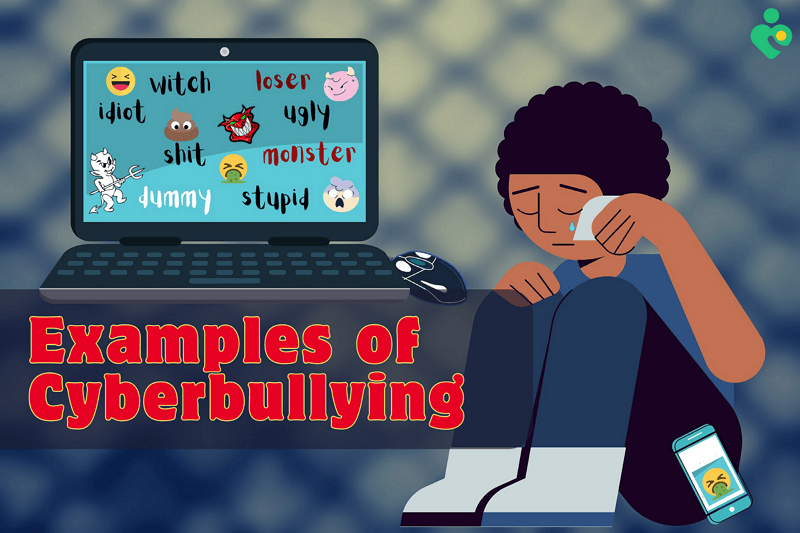
Table of Content
Part 1: What Is Cyberbullying?
Part 2: Common Examples of Cyberbullying
Part 3: How to Protect Kids from Cyberbullying?
Part 4: Why Do People Cyberbully?
Part 5: Is it Illegal for Cyberbullying?
Part 1: What Is Cyberbullying?
Cyberbullying is the use of digital platforms to intentionally harass, threaten, or embarrass an individual. It often occurs through means such as social media, text messaging, and online gaming, where perpetrators can remain anonymous, making it a particularly insidious form of bullying. This section outlines the various manifestations and impacts of cyberbullying.
Cyberbullying and Social Media
Studies indicate that approximately 55% of students have experienced cyberbullying during their lifetimes, with about 27% reporting incidents in the last 30 days.
A notable 38% of individuals witness cyberbullying on social media platforms daily, highlighting the pervasive nature of this issue in digital spaces frequented by young adults and adolescents.
This exploration underscores the critical need for awareness and preventive measures to protect individuals, especially youths, from the detrimental effects of cyberbullying.
Part 2: Common Examples of Cyberbullying
Cyberbullying can manifest in various forms, each presenting unique challenges for victims. It's essential to recognize and address cyberbullying promptly to create safer online environments for everyone. Some common examples include:
Types of Cyberbullying
- Direct Harassment: This occurs when a perpetrator sends threatening or mean messages directly to the victim through texts, emails, or instant messages.
- Social Media Abuse: Perpetrators often use platforms like Facebook or Twitter to spread rumors, share secrets, or post harmful content about someone publicly.
- Impersonation: Hackers may gain access to someone's social networking or gaming profiles and pretend to be them to post embarrassing or malicious content.
- Exclusion: Excluding someone from an online group or activity can also be a form of cyberbullying, often overlooked but equally damaging.
- Outing and Trickery: Sharing someone's personal or embarrassing information without consent or tricking them into revealing private information to be shared publicly.
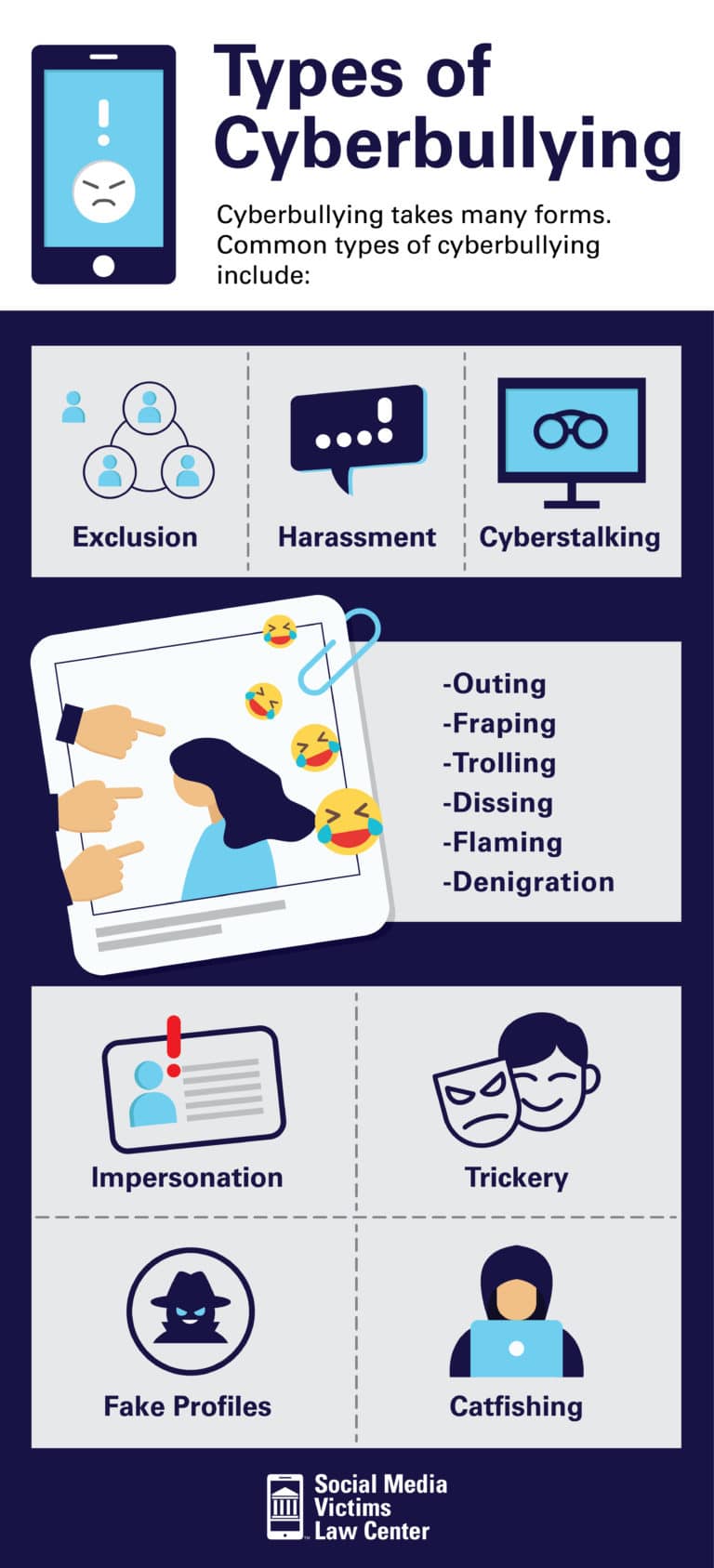
Source: socialmediavictims.org
Cyberbullying through Content Sharing
- Embarrassing Images or Videos: Posting or sending private or embarrassing photos or videos of someone without their consent.
- Harmful Websites: Starting websites that rate individuals based on appearance or popularity to harm their reputation.
- Malicious Blogs: Creating blogs that feature stories, cartoons, or jokes that ridicule someone.
- Sexting and Non-consensual Sharing: Pressuring someone into sending explicit images or messages and then sharing them without their consent, leading to humiliation and embarrassment.
- Trolling: Post inflammatory or provocative comments to provoke an emotional response or disrupt online discussions.
- Impersonation: Creating fake profiles or accounts to impersonate and ridicule others, often by posting offensive or embarrassing content in their name.
Cyberbullying in Interactive Gaming
- In-Game Harassment: Be rude or verbally abusive to someone in an online game environment.
- Identity Theft in Gaming: Steal someone's password and impersonate them in an online game to damage their reputation or progress.
Other Cyberbullying Examples
- Cyberstalking: Repeated harassment that includes threats of harm or is highly intimidating and intrudes upon one's privacy.
- Doxxing: Publish private or identifying information about someone online with malicious intent.
- Swatting: A dangerous prank that involves sending authorities to another person's home by making a false report to the police.
These are just a few examples of cyberbullying behaviors, and they can have severe consequences for victims' mental health, well-being, and safety.
Part 3: How to Protect Kids from Cyberbullying?

Recognizing cyberbullying is essential to addressing and preventing its harmful effects effectively. Here are some key signs to watch for:
- Emotional Changes: Noticeable shifts in mood, behavior, or emotional well-being, such as becoming withdrawn, anxious, or depressed.
- Avoidance of Technology: A sudden reluctance or fear of using computers, smartphones, or other devices, mainly social media platforms or messaging apps.
- Changes in Sleep or Eating Habits: Disruptions in sleep patterns, appetite changes, or unexplained weight loss or gain may indicate distress caused by cyberbullying.
- Decline in Academic Performance: Difficulty concentrating, declining grades, or increased absenteeism from school may stem from cyberbullying-related stress or anxiety.
- Social Withdrawal: Avoidance of social situations, loss of interest in hobbies or activities, or a reluctance to participate in extracurricular events could be signs of cyberbullying.
How to Prevent Cyberbullying?
Implement Parental Controls: Use software tools to help monitor and control the online content children can access. Parental control tools can block harmful content and help prevent contact with potential cyberbullies.
Monitor Online Activity: While respecting privacy, keep an eye on the apps and websites children use and discuss the purpose and safety of each platform.
Manage Screen Time: Set limits on how long children can use devices, especially for social media and online gaming, to reduce exposure to potential cyberbullying.
How to Use FamiGuard Pro to Prevent Cyberbullying?
As a parental control tool, FamiGuard Pro is dedicated to assisting parents in better protecting their children, especially when facing cyberbullying. The preventive measures mentioned above can all be accomplished with FamiGuard Pro. Additionally, FamiGuard Pro allows parents to set up keyword monitoring, so they can receive notifications immediately when inappropriate keywords or phrases are detected. Installing FamiGuard Pro is also very simple, and here are the steps:
Step 1. Create/Sign in your account and pick the suitable subscription plan to unlock all FamiGuard Pro features.
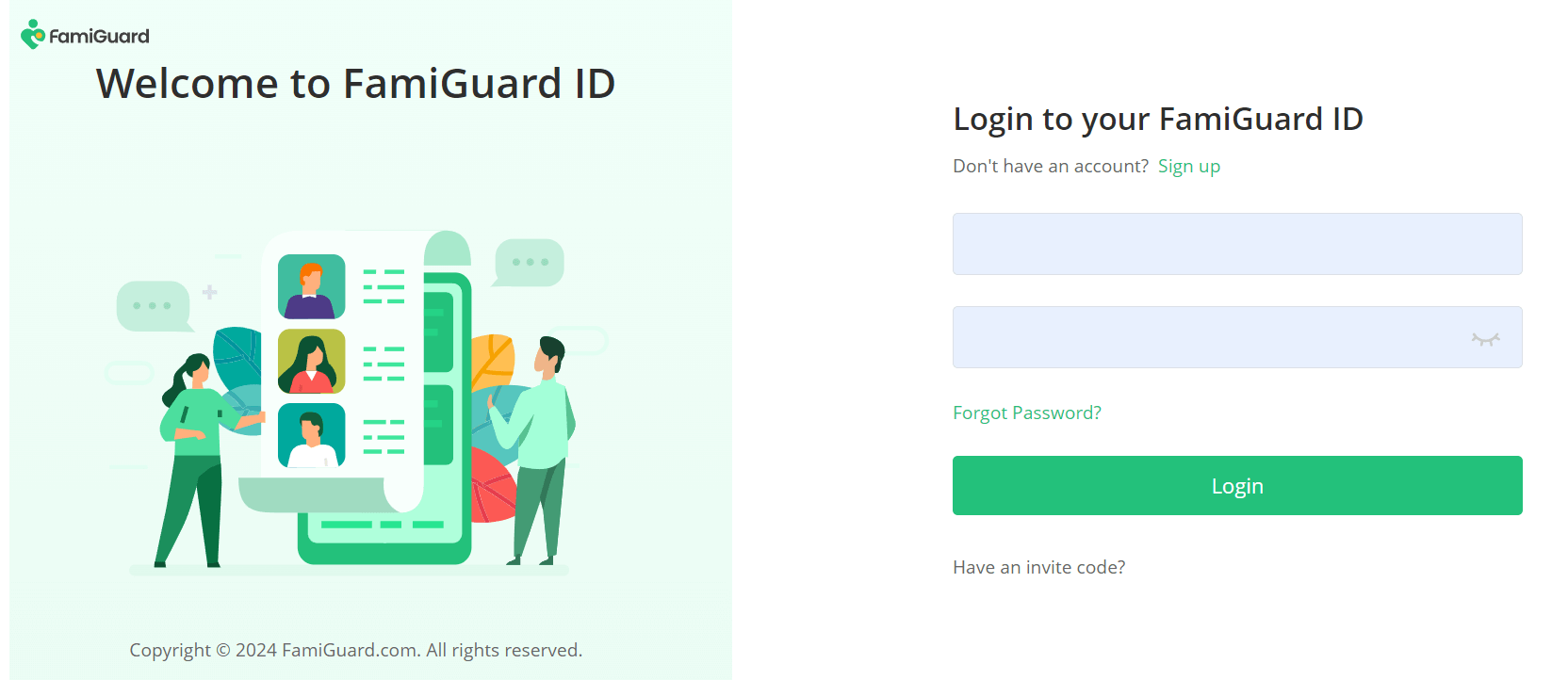
Step 2. After purchasing, you will be navigated to Member Center. Click Start Monitoring button and you will go to the dashboard, choose the device you want to bind and follow the Set up guide to finish installation and configuration.
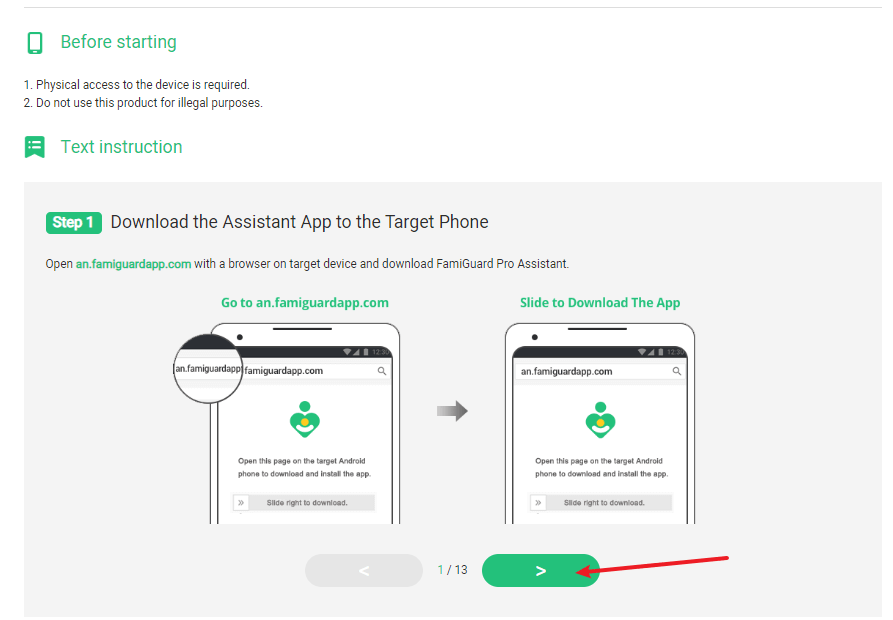
Step 3. If you verify your setup successfully, you can begin your parental control on the target device now. You can track keywords from Remote Control and Know what your child view daily.
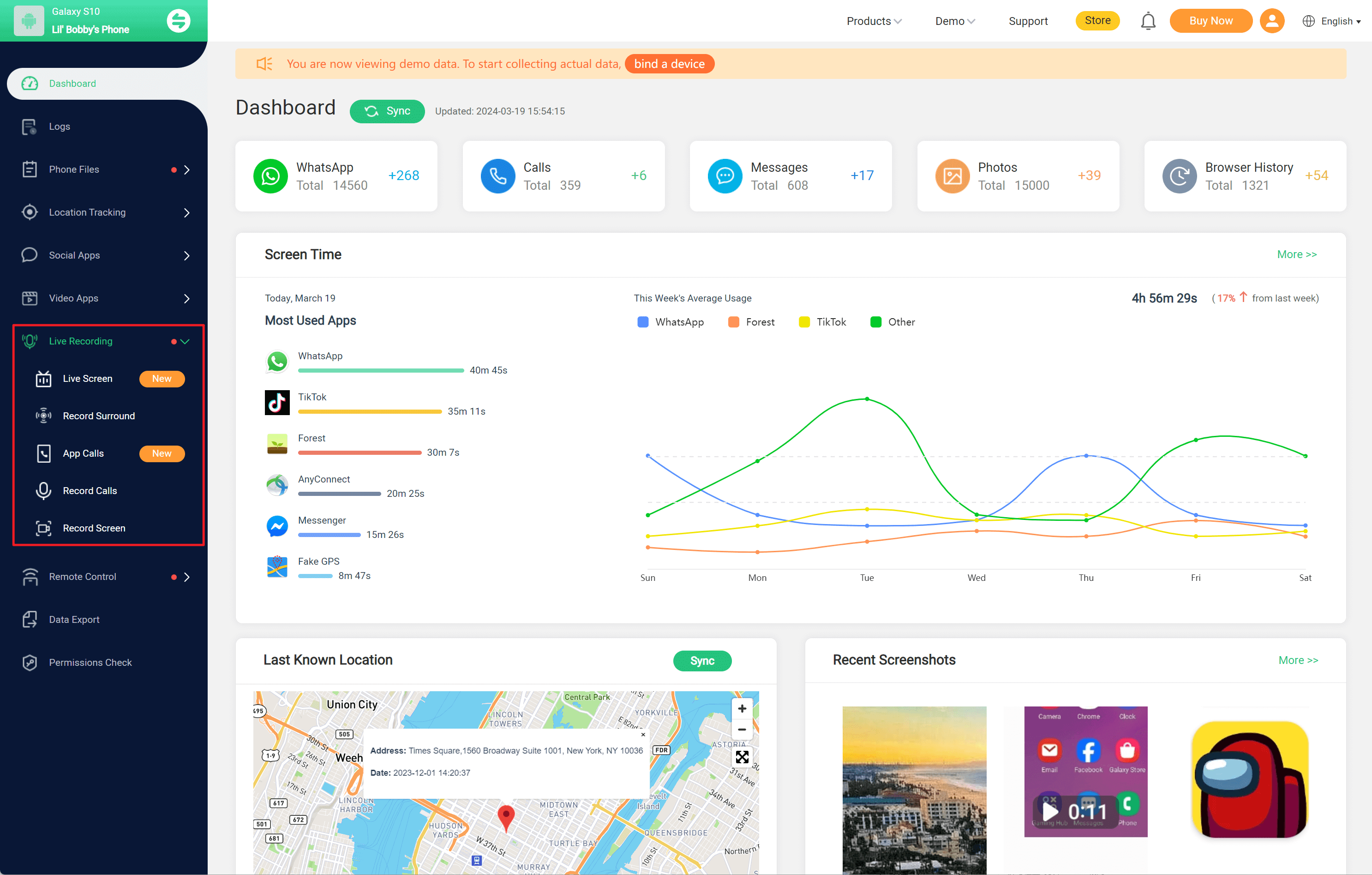

An Array of Amazing Features
-
Track cell phone location in real time and view location history.
-
Check all incoming and outgoing calls & SMS.
-
Spy on social media apps like WhatsApp, Instagram, Snapchat, Facebook, Viber, WeChat and more.
-
Remotely access the files on the target phone, like contacts, photos, call logs, etc.
Support and Intervention Strategies for Cyberbullying
- Promote Mental Health: Encourage activities that support mental well-being and resilience, such as hobbies, sports, and family time, to help children cope with any online negativity.
- React Calmly to Incidents: If a child experiences cyberbullying, respond calmly and supportively. If necessary, take steps to document the bullying, report it to the relevant platforms, and involve authorities.
- Ask for Professional Support: Utilize resources from organizations like the Megan Meier Foundation, Safe Kids, Stop Bullying, and Ditch the Label to educate and get support on handling cyberbullying effectively.
By integrating these strategies, parents and educators can create a safer online environment for children and equip them with the tools to handle and report cyberbullying.
Part 4: Why Do People Cyberbully?
Cyberbullying can stem from various motives, often rooted in personal insecurities, a desire for power or control, retaliation, or seeking attention or entertainment. Some individuals may engage in cyberbullying as a means of projecting their frustrations or problems onto others. In contrast, others may do so to conform to peer pressure or as a way to assert dominance in online social circles. Here are some key reasons why individuals engage in this harmful behavior:
- Seeking Dominance: Some cyberbullies are driven by a desire to exert control over others. This can stem from feelings of powerlessness in their offline lives.
- Manipulating Perceptions: Individuals may try to manipulate social hierarchies or enhance their status among peers by bullying others.
- Impersonal Interaction: The digital environment provides an anonymity layer that emboldens individuals to say or do things they wouldn't do in face-to-face interactions.
- Lack of Immediate Consequences: The physical distance of online interactions can make the repercussions feel less real, leading to more severe forms of harassment.
- Group Dynamics: Sometimes, cyberbullying is a group activity where individuals participate in harassing others to fit in or gain approval from peers.
- Modeling Behavior: Exposure to aggressive behaviors online, whether in media or through observing others' interactions, can normalize cyberbullying for some individuals.
- Venting Frustration: Individuals dealing with personal issues or stress may resort to cyberbullying as a misguided way of coping.
- Lack of Empathy: A significant factor is a lack of empathy, where the bully does not fully appreciate the impact of their actions on the victim.
Part 5: Is it Illegal for Cyberbullying?
In the United States, the legal framework surrounding cyberbullying varies significantly across different states, as there are no federal laws explicitly addressing it. Each state has developed its own set of regulations and penalties to combat this form of harassment.
State-Specific Legislation and Penalties
- California: Schools in California have the authority to suspend or expel students involved in cyberbullying on a case-by-case basis. This flexibility allows educational institutions to address incidents with appropriate severity, depending on the circumstances.
- Massachusetts: In Massachusetts, educational institutions can provide information about cyberbullying incidents to law enforcement agencies, facilitating police investigations and potential legal action.
- Arizona: The state defines cyberbullying under the broader category of harassment, which is considered a misdemeanor punishable by up to six months in jail, a fine of $2,500, or both. If the harassment escalates or persists, it can become a felony, potentially resulting in a two-year prison sentence.
Legal Advice and Support
If an individual is charged with cyberbullying, it is crucial to seek legal advice. An experienced criminal defense attorney can provide guidance tailored to the state's specific laws where the incident occurred.
FAQs
Q: What are some mental health consequences of cyberbullying?
A: Cyberbullying can lead to various mental health problems, including increased stress and anxiety, depression, and lower self-esteem. It can also provoke violent behavior and cause lasting emotional trauma, persisting even after the bullying has ceased.
Q: What is the prevalence of cyberbullying today?
A: We are facing a cyberbullying crisis, with over 60% of children and 40% of adults having experienced cyberbullying. The trend suggests that these figures will likely rise as time passes.
Conclusion
Through this article, we have explored examples of cyberbullying, including its manifestations, impacts, and strategies for protection, particularly for the younger generation. We have discussed various forms of cyberbullying, from direct harassment to cyberstalking, and examined the motivations behind these actions.
In conclusion, it is important to remember that cyberbullying can be addressed. Tools like Famiguard Pro offer innovative early detection and prevention solutions, such as setting keyword alerts. These technologies empower parents, educators, and individuals to safeguard their digital well-being. Let's use this knowledge to create a safer online environment and combat cyberbullying with vigilance, empathy, and the right tools.

By Tata Davis
professional in software and app technology, skilled in blogging on internet
Thank you for your feedback!






































